TechTvsWhat is QLED? Samsung’s Quantum Dot TV technology explainedQLED is Samsung’s Quantum Dot tech for its high-end TVs. But what is it, how does it work and compare to OLED?When you purchase through links on our site, we may earn an affiliate commission.Here’s how it works.
TechTvsWhat is QLED? Samsung’s Quantum Dot TV technology explainedQLED is Samsung’s Quantum Dot tech for its high-end TVs. But what is it, how does it work and compare to OLED?When you purchase through links on our site, we may earn an affiliate commission.Here’s how it works.
QLED is Samsung’s Quantum Dot tech for its high-end TVs. But what is it, how does it work and compare to OLED?
When you purchase through links on our site, we may earn an affiliate commission.Here’s how it works.
(Image credit: Samsung)
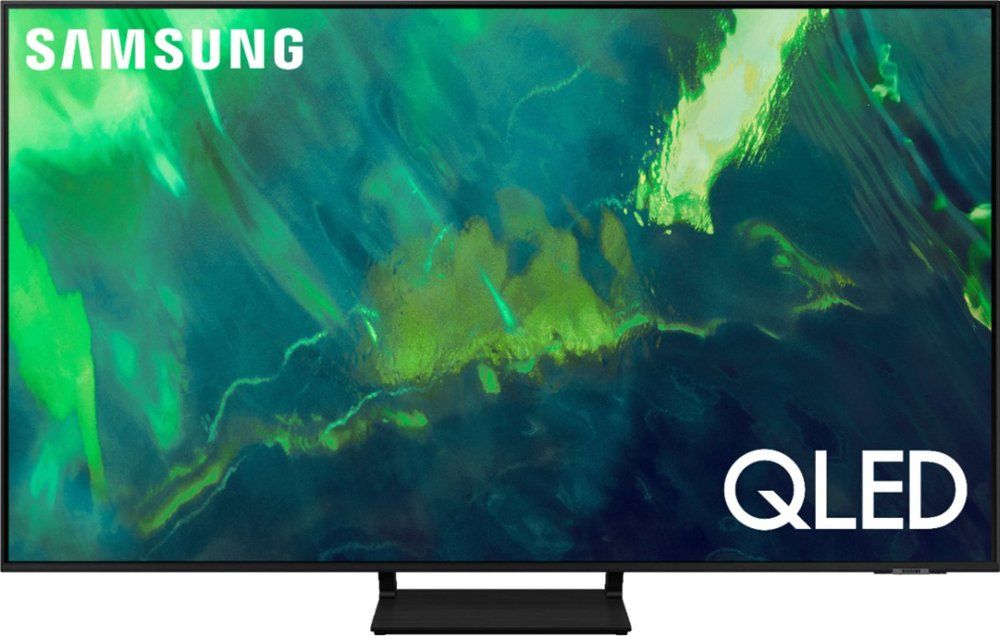
(Image credit: Samsung)
QLED is a word you’ll see used a lot when you’re researching thebest TVs, but it sort-of means nothing all on its own (well, it’s loosely Quantum Dot Light Emitting Diode, if you love an almost acronym).
As a word, QLED also reads a lot like OLED, but you don’t want to get the two panel types confused, as we’ll come to later. There are pros and cons for each, but right now we’re going to focus proper on QLED.
QLED TV: What is a quantum dot?
(Image credit: Samsung)
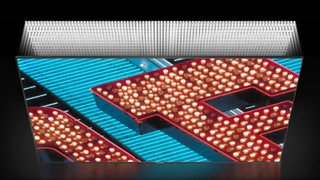
(Image credit: Samsung)
In short: a QLED TV is actually an LCD panel (that’s Liquid Crystal Display, again for the acronym lovers). It’s just there’s an LED backlight behind it – three key letters from ‘QLED’.
That Q is not just marketing bluster though: Quantum Dots are a practical example of nanotechnology. In this case they’re tiny fluorescent particles, synthesised in a lab, which measure between two to 10 nanometers in diameter, i.e. they’retiny.
While quantum dots have a number of bafflingly complex practical scientific applications, we’re concerned here with light. When a quantum dot absorbs light, its chemistry essentially converts to light of a particular and very specific wavelength. The size of the particle determines the colour it outputs: larger dots release energy at a slower rate, giving them a wavelength close to red, while smaller dots trend towards blue.
Want to seeSamsung’s latest?Here’s the company’s QLED TV pageon its official site so you can browse its QLED range.
Sign up to the T3 newsletter for smarter living straight to your inbox
Get all the latest news, reviews, deals and buying guides on gorgeous tech, home and active products from the T3 experts
Today’s best Samsung Q80B, Samsung Q70B and Samsung Q60B dealsSamsung Q80B$769$697.95ViewSee all pricesSamsung Q60B$547.99$437.95ViewSee all pricesWe check over 250 million products every day for the best prices
Today’s best Samsung Q80B, Samsung Q70B and Samsung Q60B dealsSamsung Q80B$769$697.95ViewSee all pricesSamsung Q60B$547.99$437.95ViewSee all pricesWe check over 250 million products every day for the best prices
Today’s best Samsung Q80B, Samsung Q70B and Samsung Q60B dealsSamsung Q80B$769$697.95ViewSee all pricesSamsung Q60B$547.99$437.95ViewSee all pricesWe check over 250 million products every day for the best prices
Today’s best Samsung Q80B, Samsung Q70B and Samsung Q60B deals
Samsung Q80B$769$697.95ViewSee all pricesSamsung Q60B$547.99$437.95ViewSee all prices
Samsung Q80B$769$697.95ViewSee all prices
Samsung Q80B$769$697.95ViewSee all prices

Samsung Q80B
Samsung Q80B

$769$697.95View
$769$697.95
$697.95
See all prices
Samsung Q60B$547.99$437.95ViewSee all prices
Samsung Q60B$547.99$437.95ViewSee all prices

Samsung Q60B
Samsung Q60B

$547.99$437.95View
$547.99$437.95
$437.95
See all prices
We check over 250 million products every day for the best prices
We check over 250 million products every day for the best prices
What about Neo QLED?
(Image credit: Samsung)
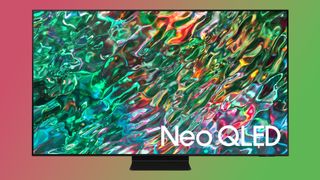
(Image credit: Samsung)
Technology evolves, of course, and Samsung has elevated QLED with its next step: Neo QLED. This, ultimately, is combining Quantum Dot’s benefits with Mini LED backlighting, meaning there are more, even smaller LEDs for illumination. This enhances backlight precision.
But as there can be more Mini LEDs used in the backlight, Neo QLED has the capacity to be even brighter than QLED. It’s this added brightness output, which is expressed in ‘nits’ that gives a more striking image, without foregoing the control at black and near-black levels.
Obviously Neo QLED offers more, but that’s also why it costs more and, for now, is the reserve of Samsung’s upper spectrum of TVs. It began life in 2021, so isn’t a particularly old technology.
Today’s best Samsung 55QN90B, Samsung 65QN90B, Samsung 75QN90B and dealsSamsung 65QN90B$2,297.99$1,397.95ViewSee all pricesSamsung 75QN90B$1,667.95ViewSee all pricesWe check over 250 million products every day for the best prices
Today’s best Samsung 55QN90B, Samsung 65QN90B, Samsung 75QN90B and dealsSamsung 65QN90B$2,297.99$1,397.95ViewSee all pricesSamsung 75QN90B$1,667.95ViewSee all pricesWe check over 250 million products every day for the best prices
Today’s best Samsung 55QN90B, Samsung 65QN90B, Samsung 75QN90B and dealsSamsung 65QN90B$2,297.99$1,397.95ViewSee all pricesSamsung 75QN90B$1,667.95ViewSee all pricesWe check over 250 million products every day for the best prices
Today’s best Samsung 55QN90B, Samsung 65QN90B, Samsung 75QN90B and deals
Samsung 65QN90B$2,297.99$1,397.95ViewSee all pricesSamsung 75QN90B$1,667.95ViewSee all prices
Samsung 65QN90B$2,297.99$1,397.95ViewSee all prices
Samsung 65QN90B$2,297.99$1,397.95ViewSee all prices

Samsung 65QN90B
Samsung 65QN90B

$2,297.99$1,397.95View
$2,297.99$1,397.95
$1,397.95
See all prices
Samsung 75QN90B$1,667.95ViewSee all prices
Samsung 75QN90B$1,667.95ViewSee all prices

Samsung 75QN90B
Samsung 75QN90B

$1,667.95View
$1,667.95
$1,667.95
See all prices
We check over 250 million products every day for the best prices
We check over 250 million products every day for the best prices
QLED vs OLED: How does it compare?
(Image credit: Philips)
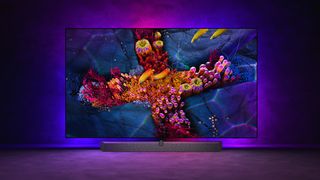
(Image credit: Philips)
QLED’s major rival in high-end TV tech is OLED, the latter which uses self-emissive pixels that don’t need a backlight as they illuminate themselves, giving these TVs incredible control over the panel. Each pixel can dim itself right down to being off for when dark or black content needs to be shown, and this can be right next to a pixel blaring at full brightness, meaning dazzling contrast between the two. However, these individual pixels can’t go that bright compared to a large backlight, such as QLED or Neo QLED. LG, which produces the OLED panels, has introduced ‘EX’ versions in 2022 that can be brighter than their predecessors, however, narrowing the gap between the two tech types.
Today’s best LG C2 OLED and Sony A90J dealsLG OLED48C2$1,499.99$914.95ViewSee all pricesSony A90J$2,597.95ViewSee all pricesWe check over 250 million products every day for the best prices
Today’s best LG C2 OLED and Sony A90J dealsLG OLED48C2$1,499.99$914.95ViewSee all pricesSony A90J$2,597.95ViewSee all pricesWe check over 250 million products every day for the best prices
Today’s best LG C2 OLED and Sony A90J dealsLG OLED48C2$1,499.99$914.95ViewSee all pricesSony A90J$2,597.95ViewSee all pricesWe check over 250 million products every day for the best prices
Today’s best LG C2 OLED and Sony A90J deals
LG OLED48C2$1,499.99$914.95ViewSee all pricesSony A90J$2,597.95ViewSee all prices
LG OLED48C2$1,499.99$914.95ViewSee all prices
LG OLED48C2$1,499.99$914.95ViewSee all prices

LG OLED48C2
LG OLED48C2

$1,499.99$914.95View
$1,499.99$914.95
$914.95
See all prices
Sony A90J$2,597.95ViewSee all prices
Sony A90J$2,597.95ViewSee all prices

Sony A90J
Sony A90J

$2,597.95View
$2,597.95
$2,597.95
See all prices
We check over 250 million products every day for the best prices
We check over 250 million products every day for the best prices
QLED TVs: The pros and cons
(Image credit: TCL)
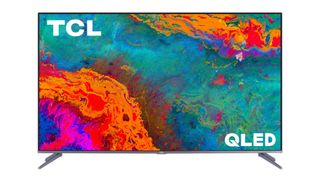
(Image credit: TCL)
QLED’s similarity to existing tech means that companies have been able to scale it up very quickly, both in terms of size and resolution. You’ll find really large screens in the QLED domain, and there’s a lot more room for experimentation.
Then there’s the picture. QLED is frankly a stunning experience if you’re not used to high-end displays, with incredible colour reproduction, vast contrast, and high amounts of saturation, the perfect medium for HDR content.
Quantum Dots are inorganic, meaning QLEDs should suffer far less picture degradation over time compared to similar OLED panels. LCD is a durable tech –we’re not far enough along the QLED track to conclusively prove its longevity, but it’s likely to stay in tip-top condition longer than OLED.
QLED massively improves the contrast of standard LCD displays, but it’s not absolutely perfect. Zoned illumination helps to darken areas that need to be darker, and there’s a lot less of the greyness that non-QLED screens display, but QLEDs do suffer from light bleed, where a slight haze surrounds bright objects in an otherwise dark scene, and there’s not as much nuance visible in dark scenes as OLED.
While viewing angles have been steadily improving over time, QLED screens do tend to look best when viewed head-on – this does depend on the LCD type used, but it’s pretty much a universal constant that the further you go from central, the worse the picture will look, though a lot of work is done in high-end screens to mitigate this.
QLED is also a little slower than OLED. There’s still a liquid crystal panel in there, and that requires a little extra time to turn on and off, unlike the instantly addressable pixels of an OLED panel. This tends to be more of a theoretical problem, though – you don’t see any real effect of this on the best TVs.

The ultimate full-body gym workout for beginners, according to a fitness expertWant to hit the gym to build strength and muscle, but don’t know where to start? This workout can help
Want to hit the gym to build strength and muscle, but don’t know where to start? This workout can help

Amazon upgrades Kindle Colorsoft already – new model addresses customer complaintsAmazon’s full-colour e-reader fixes a problem that was plaguing its display
Amazon’s full-colour e-reader fixes a problem that was plaguing its display